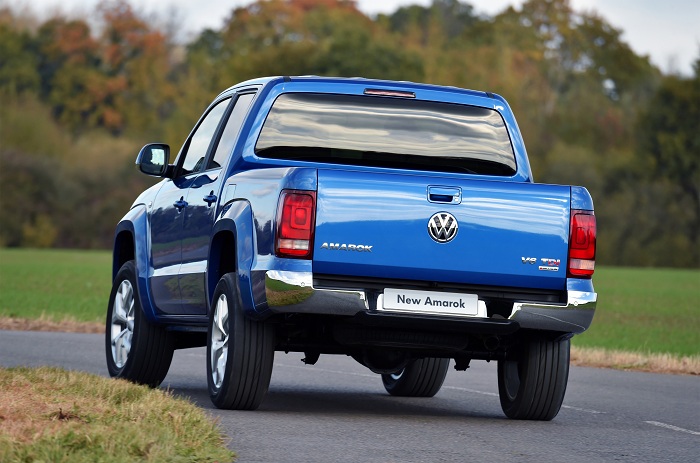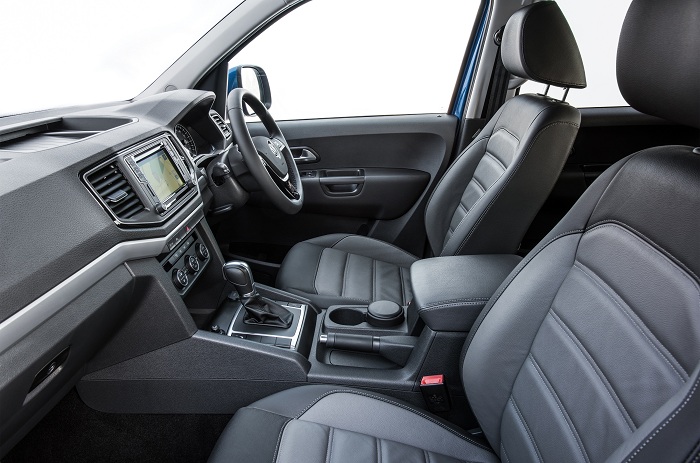There’s no doubt that the Toyota Hilux and Ford Ranger share the spoils when it comes to the king of sales, but which bakkie is the best at, well, being a bakkie? I think I might have found my answer when the Volkswagen Amarok V6 TDI was dropped off at the office recently.
The Amarok
I can remember back in 2014 when I first had an opportunity to drive an Amarok. It was refined, comfortable, economical, capable and looked like a VeeDub bakkie should. In the back of my mind though, I always knew that the local market wouldn’t trust a bakkie with a small engine that could tow over three-tons, perform well on and off-road and be better on fuel than the establishment while remaining reliable.

I have read several forums and spoken to many off-road enthusiasts, and it would appear that the Amarok’s reliability issues have been exaggerated to an extent. Other bakkie manufactures also experience longevity issues, only these are not quite as well known.
That is not to say that the Amarok is an innocent victim, but rather that it has received the brunt of the flack for reliability issues when it comes to vehicles of this type.
The need for displacement
In any case, to get the public on board, Volkswagen needed to bring in something bigger than a 2.0-litre engine, so what they did was grab the 3.0-litre V6 diesel motor that also does work in various Audi and Porsche models, and place it into the rather roomy engine bay of the Amarok.
In this guise, the motor produces 165kW/550Nm with an overboost function that takes it to a mammoth 180kW/580Nm. As well as stronger pistons, the V6 also gets new brakes with discs on each corner as opposed to the 2.0-litre’s drums.
Looking at the power and torque produced by this motor in other products, I’m tempted to say that this lump isn’t even stressed with this sort of output. Combine the conservatively tuned engine with the super slick ZF eight-speed torque converter automatic gearbox, and you have a bakkie that should be as robust as your average South African demands.
The V6 completely transforms the Amarok; it isn’t just punchy for a bakkie, it’s punchy compared to most things. The 0-100km/h dash will be dealt with in a claimed 8.0 seconds, although I think it may be faster.
It’s not just the acceleration though, it’s the way it tows things that makes progress seem effortless. I had four passengers on board and a motocross bike on the back and it just didn’t feel loaded. In fact, the more items I added to the load bay, the more planted and less bouncy the ride became.
Think of your towing requirements, a boat, a caravan, horse box, your house if you’re sick of the neighbours, and the Amarok could probably haul it along. Seriously though, its 3.3-ton towing capacity and electronic trailer stabilisation is deeply impressive.
Premium inside

Enthusiasts can say what they want but the Amarok was the first bakkie outside the United States to provide more luxury, improved ride quality and a premium interior to what has always been a utilitarian segment.
Volkswagen were clearly on to something because the newest range of bakkies are now more SUV-like in their interior quality and in their driving experience. The Amarok retains its premium look and feel inside with an easy to use infotainment system, and ergonomics that make life inside appear very similar to other Volkswagen products.
Premium price
There has to be a downside to all this performance and quality, and that comes in the form of the list price for the V6. My test unit was the Highline 4Motion version, making it the base model V6 Amarok. But, as with many press cars, mine had some options fitted which took the price from R665 700 to well over R700 000.
That means it’s over R100 000 more than the top-spec Ford Ranger and Toyota Hilux. The thing is though, it feels worth the additional capital outlay thanks to that drivetrain and driver satisfaction. With Mercedes-Benz releasing its X-Class soon and heavily worked Rangers available, it would appear that the market for premium bakkies is growing and that the Amarok is well place to take its slice of the pie.

















